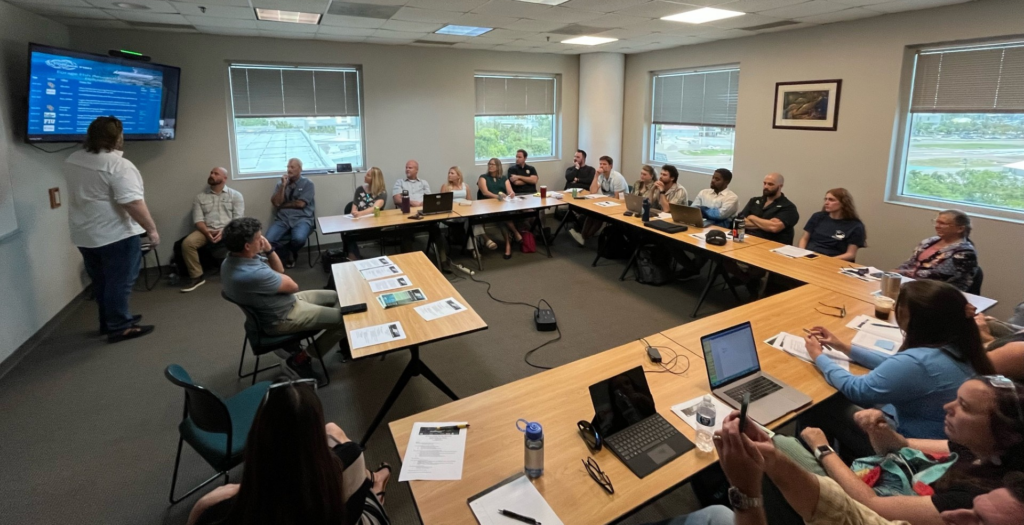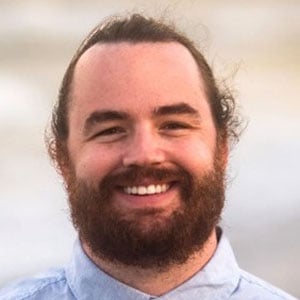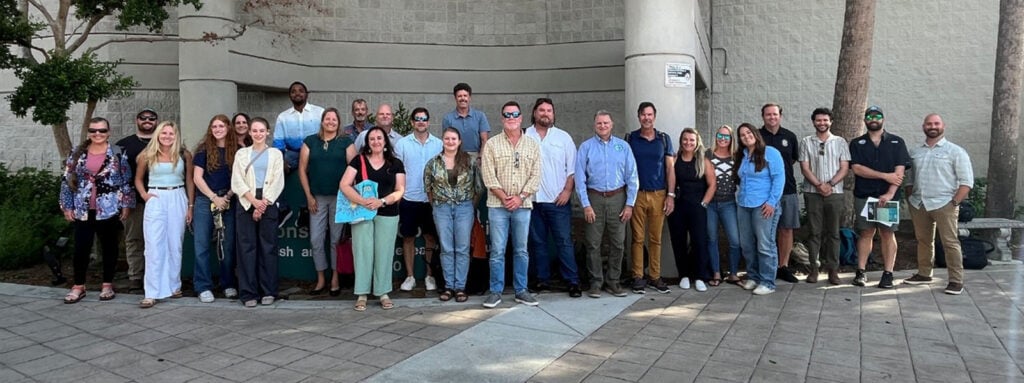Recapping the 9th Annual Forage Fish Research Program Data Workshop
On Thursday, May 29, 2025, the Florida Forage Fish Coalition, made up of the IGFA, Pew Charitable Trusts, Wild Oceans, Fish Florida, Florida Wildlife Federation, Angler Action Foundation, American Sportfishing Association, and the Tampa Bay Estuary Program, hosted the 9th Annual Forage Fish Research Program Data Workshop. The Workshop is an annual opportunity for the Forage Fish Research Program (FFRP) to update interested stakeholders and the academic community on the work being done on Florida’s forage fish by Florida Fish and Wildlife Conservation Commission’s Fish and Wildlife Research Institute (FWRI), FFRP Data Partners, and FFRP graduate student Fellows. The 2025 Workshop included presentations on the history of the FFRP Fellowship program, FWRI’s research priorities and data availability, priority projects, and research collaborations via the program’s data partners, including the Florida Department of Environmental Protection’s Aquatic Preserve Program, Southwest Florida Water Management District, and the Tampa Bay Estuary Program.

 The highlights of the workshop each year are the presentations by current FFRP Fellows. This year, the first Fellow to present was Megan Siemann, a Ph.D. student at the University of Florida. Megan presented her research titled, “Optimizing Forage Fish Trophic Sampling for Ecosystem Modeling in the Nature Coast Aquatic Preserve”. Please see below for a short description of Megan’s work:
The highlights of the workshop each year are the presentations by current FFRP Fellows. This year, the first Fellow to present was Megan Siemann, a Ph.D. student at the University of Florida. Megan presented her research titled, “Optimizing Forage Fish Trophic Sampling for Ecosystem Modeling in the Nature Coast Aquatic Preserve”. Please see below for a short description of Megan’s work:
Food web models help researchers and policymakers explore potential management strategies and future ecosystem changes. Forage fish and other low-level consumers play a key role in transferring energy up the food web from primary producers to top predators like sport fish. Accurately representing energy flow through forage fish improves model reliability. This project used diet data from the Fisheries Independent Monitoring (FIM) program and compiled stable isotope data from published literature to evaluate predator-prey relationships in food web models for the recently established Nature Coast Aquatic Preserve (NCAP). Because stable isotope signatures of predators reflect those of their prey, we can use this data to estimate the average consumption of prey items identified from the FIM's stomach content data. Stable isotope data have been published for a range of estuarine species in the region, including pinfish, an indicator species in models for other Florida estuaries. We also identified species and groups (e.g., plankton) for which isotope signatures from outside the NCAP are available, but for which additional sampling within the region is recommended. The assembled dataset provides a baseline for evaluating how well nearby food web models reflect observed predator-prey dynamics along this part of Florida’s coast.
The next Fellow to present was Mack White, a Ph.D. student from Florida International University. Mack’s research was titled, “Dynamic Stability: Spatiotemporal Patterns in Forage Fish Biomass Responses to Disturbance Across Florida Estuaries”. Please see below for a brief description of Mack’s work:
Forage fish are critical components of marine food webs, linking primary production to top predators. However, these species are especially vulnerable to both press and pulse disturbances associated with global change. Using ~30 years of data from seven major estuaries across Florida, USA, we examined the drivers that underpin the temporal stability of forage fish assemblages. Specifically, we (1) assessed long-term trends in assemblage structure, diversity, and functional traits; (2) quantified forage fish biomass responses to marine heatwaves, cold snaps, and hurricanes; and (3) identified drivers of temporal biomass stability. Preliminary results suggest widespread declines in forage fish biomass and species richness, especially in northern estuaries. Assemblages were generally more resistant than resilient to disturbance. However, biomass was least resistant to heatwaves. Resistance emerged as the strongest predictor of long-term stability, though other elements of community structure, diversity, dynamics, and traits also influenced stability, in estuary-specific ways that displayed trends associated with latitudinal gradients observed in our study. Conserving forage fish diversity and promoting traits linked to resistance will be critical for sustaining the ecological roles of these species and the resilience of Florida’s nearshore ecosystems.
The FFRP Fellowship program has been a major success over the years, with 15 Fellowships funded, $240,000 raised to support the Fellowships, and 10 peer-reviewed publications to date, with more on the way. Fellows have gone on to work in academia and at numerous federal and state agencies, including the U.S. Geological Survey, the National Oceanic and Atmospheric Administration, and FWRI. Dakota Lewis, the only Fellow to receive the Fellowship twice while studying at two different schools, is quoted as saying,
“The Forage Fish Research Fellowship has given me the freedom to be scientifically creative during my Ph.D. Ultimately, I have been able to leverage the support of the Forage Fish Research Program to expand the scope of my dissertation research across a broader geographic region and explore cutting-edge machine learning methodologies.”
Proposals for the 2025-2026 Fellowships are due on June 30, 2025, and we look forward to the great research that the next round of FFRP Fellows will do. We are pleased to announce an increase in the Fellowship award, thanks to the generosity of Fish Florida, from $15,000 to $20,000 per Fellow, to support the great research that will be done by the next round of FFRP Fellows.
Looking forward, IGFA Conservation Director, Bruce Pohlot, and Conservation Manager, Jackson Martinez, will be presenting a poster on the FFRP at the 2025 annual meeting of the American Fisheries Society in August. For more information about the Fellows and the program, go to https://floridaforagefish.org/, and please see our program infographic here.


